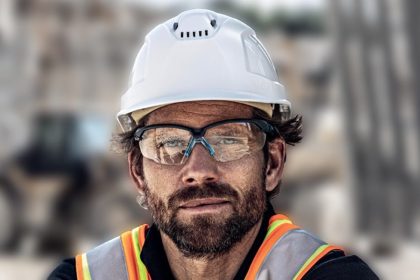UNSW researchers think ‘green roofs’ could be the answer to rising city temps and soaring energy demand.
The study, published last week in Nature Cities, found that green rooftop spaces could cool South Korea’s capital, Seoul, by a whole 1°C during summer and slash the city’s energy demand by almost 8 per cent under maximum coverage.
According to the paper’s co-author, Sydney Scientia Professor Mattheos Santamouris, the team are the first to look at the transformative effect of green roofs on a city-wide scale and say the findings could help create a template for overheating Aussie cities to follow.
“Previously, we have only looked at the energy impact of green roofs for singular buildings, but now this is the first study to evaluate the real climatic and energy impacts of green roofs at the city scale,” said Prof. Santamouris.
“Our findings demonstrate the tremendous potential of green roofs to substantially decrease the peak temperature of a city and increase energy savings.”
The research team ran large-scale cooling climatic and building energy simulations under three greenery coverage scenarios to evaluate the potential of green roofs to lower the temperature and cooling needs of Seoul during the hottest summer month, August.
They specifically focused on non-irrigated extensive green roofs – a type of lightweight green roof with large-scale implementation potential and fewer maintenance costs.
Unsurprisingly, the modelling found that the higher the coverage of green roof systems, the more significant the decreases in temperatures and energy demand.
When 90 per cent of the buildings were covered with green roofs, the city’s air temperature and surface temperature decreased by up to 0.54°C and 2.17 °C, respectively. Meanwhile, building energy use dropped by approximately 7.7 per cent.
“Green roofs help cool temperatures by facilitating evaporation through plant transpiration, which cools the surrounding air and reduces the need for mechanical cooling systems (air conditioning), lowering the overall energy demand,” Prof. Santamouris says.
“Additionally, the layer of soil and vegetation on green roofs provides insulation, reducing heat transfer into buildings and further lowering energy costs.”
Australia is falling behind in implementing green roofs
Unlike Seoul, where the adoption of green roofs is expected to expand to between 30 and 60 per cent in the next few decades, experts say their implementation in Australia has slowed to a crawl.
In 2019, The City of Melbourne mapped roofs across the CBD and found just 40 had a garden on top, with that number only growing to 50-60 in 2024.
Similarly, the Sydney CBD has around 80 green roofs, only double the amount it had when council members first developed a rooftop greenery policy ten years ago.

With only a minuscule number of green shoots sprouting from the concrete skyline in Aussie cities, Santamouris says widespread adoption of the technology will require major regulatory reform and government incentives.
“Green roofs are one of the more expensive heat mitigation technologies with initial capital costs and ongoing maintenance, so it’s not always suitable,” says Prof. Santamouris.
“But for cities and businesses in developed countries that can afford it, green roofs are an important social contribution that policymakers can create the conditions to encourage widespread adoption.”
We need to turn down the heat
Similar to cities like Sydney and Melbourne, Seoul has seen climate change and rapid urbanisation only worsen overheating issues, increasing energy consumption needs and severely impacting the health of residents.
“One of the major problems in the built environment worldwide is severe urban overheating,” says Prof. Santamouris. “And as our cities heat up, thermal discomfort and heat-related illness and death also rise.”
On the current trajectory, night temperatures in cities could increase by up to 5°C by 2050, leaving many people, even those in developed countries, struggling to afford the costs of electricity for cooling, and heat-related illnesses and deaths will rise significantly.
“There is an urgent need to implement a combination of heat mitigation techniques and technologies in our cities to decrease urban temperatures,” says Prof. Santamouris.
“If we do not, the cost in the coming decades will be catastrophic, not just for the economy, but on quality of life, particularly for low-income populations who will suffer the most.”




